Are you looking for ways for your students to branch out in their science knowledge? See what we did there? Why not start with some fun facts about trees?
The teacher team at Teach Starter compiled a list of fascinating leafy facts you can share with your class for Arbor Day, Earth Day or just to get your kids excited about these fascinating plants. These tree facts will start your morning meeting discussion, serve as fun daily whiteboard facts or can be used as the backbone of a new lesson. Keep scrolling to the end for some lighthearted tree jokes and ideas for using these tree facts in your science, math and ELA classes!
Before diving into some amazing facts, kids should understand how and why trees are important. Use our first six tree facts to get your tree discussion growing, and generate some enthusiasm for these incredible plants!
Why Are Trees So Important?
You may have a student or two raise their hand and ask why we should care so much about trees. This is a valid question, especially if some children haven’t had the opportunity to explore nature much outside of the classroom. School is a perfect environment to discuss and explore the importance of trees and explain how they relate to each and every one of us.
1. Trees remove CO2 (carbon dioxide) from the atmosphere and produce oxygen, which is essential for us to breathe. According to the U.S. Department of Agriculture, “One acre of forest absorbs six tons of carbon dioxide and puts out four tons of oxygen. This is enough to meet the annual needs of 18 people.”
2. Trees cool the Earth’s air and surface temperatures, helping battle climate change.
3. Trees are habitats for thousands of animal species, including birds, insects and mammals.
4. Trees’ roots hold soil in place and help fight erosion.
5. Fallen tree leaves create compost that enriches the soil.
6. Trees provide food for both animals and humans such as orange trees, maple trees and apple trees.
Fun Facts About Trees
Looking for more fun and unusual facts about trees to inspire your classroom? Take a look at these incredible tidbits of knowledge your students will never forget:
7. Standing only a few centimeters in height, the world’s smallest tree is thought to be the dwarf willow.
8. There are 60,065 different tree species currently known to science.
9. The rare Wollemi tree was once thought to be extinct, but then it was found in a temperate rainforest in 1994 in Australia‘s Wollemi National Park. The species dates all the way back to the Jurassic era when dinosaurs walked the earth!
10. The Apollo 14 mission took seeds to the moon in 1971. The US Forest Service and NASA wanted to see if the moon’s orbit caused the “moon trees” to grow differently back on Earth. The result? There’s been no noticeable difference between regular trees and “moon trees” since their planting over 40 years ago. But hey, sometimes even a failed experiment teaches us something!
11. Trees need to drink a lot of water! A large oak tree can consume 100 gallons of water daily, while a giant sequoia can drink up to 500 gallons daily.
12. A large oak tree can drop as many 10,000 acorns in one year!
13. The deepest documented tree roots belong to the Shepherd’s Tree, native to the Kalahari Desert. Their roots can go 230 feet below the ground! That’s about three-fourths the height of the Statue of Liberty.
14. The leaves, twigs and branches on trees are like nature’s soundproofing. They all help absorb and deflect sound waves to mask unwanted noise.
15. The Wright brothers used the wood from a spruce tree to build the Flyer, their first aircraft.
16. The longest-living trees on Earth are North America‘s bristlecone pines. The oldest bristlecone is located in California and nicknamed Methuselah. It’s thought to be more than 4,789 years old!

17. Weeping willow tree bark has a compound similar to aspirin, a type of pain reliever. When male deer are growing new antlers, they’ll look for weeping willows to help alleviate the itchiness.
18. A tree now known as the “Survivor Tree” was remarkably found alive at Ground Zero after the September 11 attacks. This Callery pear tree was nursed back to health in a Bronx nursery and is now part of the National September 11 Memorial and Museum.
19. If insects attack a tree, it will fight back! Trees can flood their leaves with chemicals called phenolics which help deter pests. These are found in many trees, including pine, oak, spruce and birch trees.
20. Forests make up one-third of the Earth’s land surface which is more than 15 million square miles!
21. Almost 58 percent of all tree species are single-country endemics. This means that each one naturally occurs only within the borders of a single nation. Three countries have the highest totals for endemic tree species: Indonesia, Brazil, and Columbia.
22. A giant sequoia tree in California is the world’s largest tree (by volume)! Its name is General Sherman, and it stands 275 feet tall with 52,000 cubic feet of wood (that’s about two-thirds as big as a hot air balloon).
23. Cherry tree blossom petals are edible and are used to make many traditional Japanese sweets and tea.
24. The rainbow eucalyptus tree (native to parts of southeast Asia and Papua New Guinea) sheds bark in uneven strips leaving behind rainbow-colored bark in shades of green, orange, yellow, purple, blue and red.
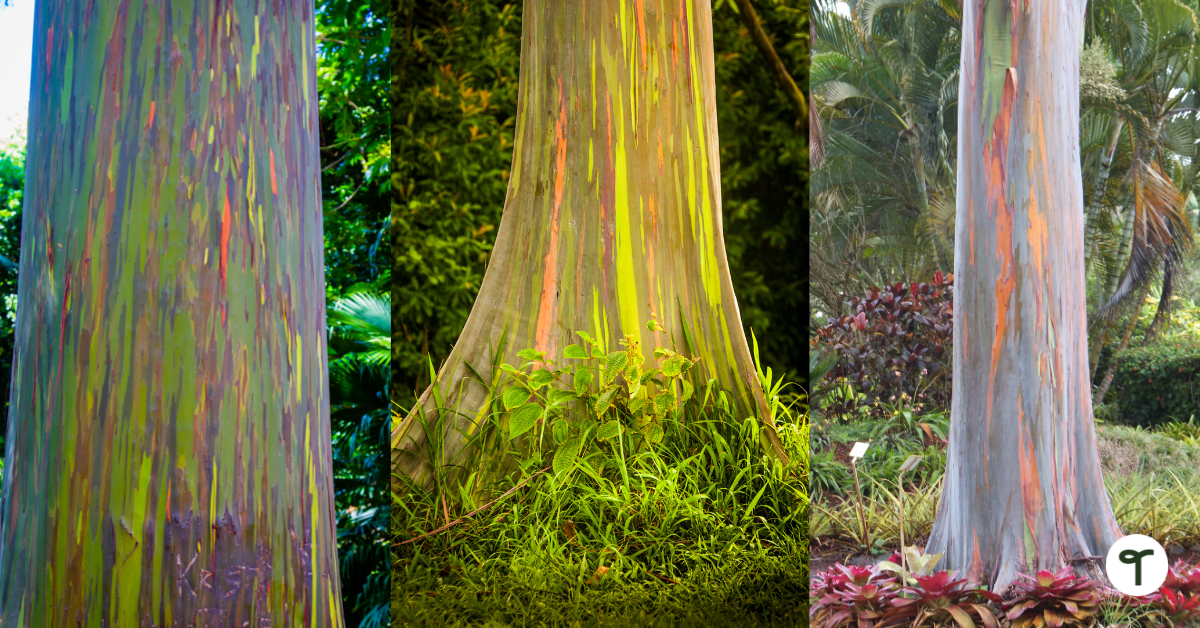
25. Trees and fungi have symbiotic relationships. Fungi on the roots of trees help the tree absorb more water and nutrients from the soil. In return, trees repay them by sharing sugars from photosynthesis.
26. It takes about 40 gallons of maple tree sap to produce one gallon of maple syrup! Thank a maple tree next time you take a bite of pancake.
27. The Jabuticaba tree’s black, grape-like fruit grows all over its trunk and branches. These unusual trees are native to Brazil.
28. Mangrove trees are found in salty water along rivers and coastlines in 118 countries. They can filter out as much as 90 percent of all the salt in seawater when it enters their roots.
29. The Dragon Blood Tree is shaped like an umbrella and releases bright red resin if its bark is injured — it looks like it’s bleeding, just like people.
30. Dead trees play an essential role in the ecosystem. Dead wood creates a steady source of nitrogen and microhabitats for as much as 40 percent of woodland wildlife from fungi and mosses to insects and birds.
31. In Greek mythology, the oak is the sacred tree of Zeus, the king of the gods. Oak trees are sacred in many cultures.
32. It’s estimated that about 400 billion trees are standing in the Amazon rainforest.
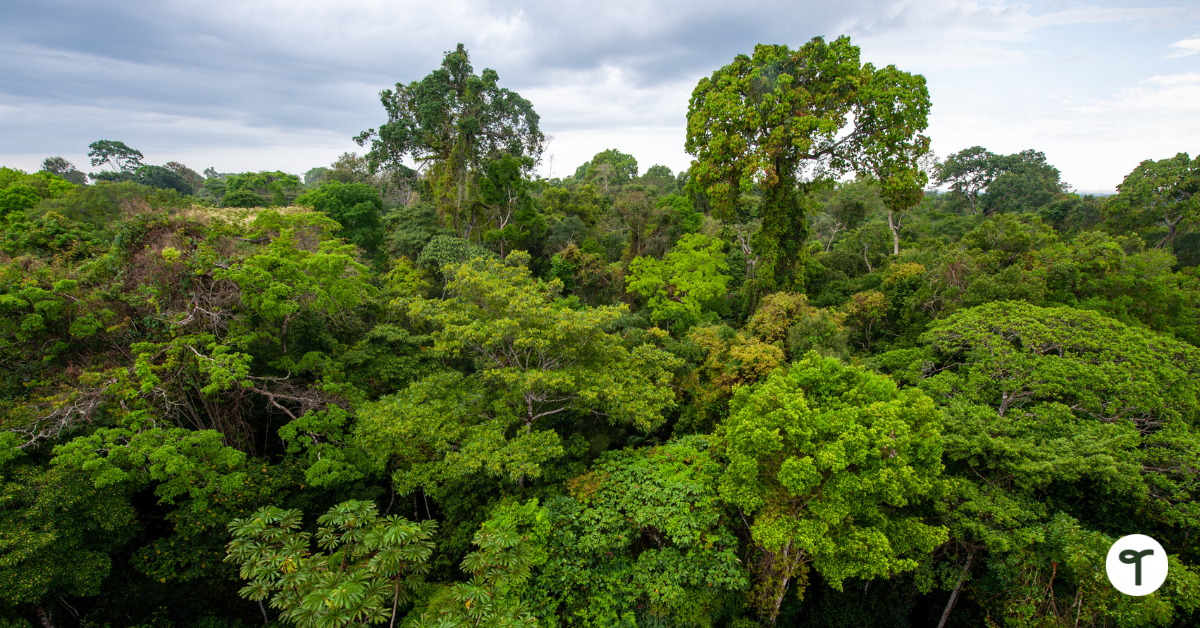
33. Leaves look green because chlorophyll absorbs blue and red light energy, causing the green energy to bounce off the leaf’s surface.
34. The Gingko biloba species of trees is one of the oldest in the world. These trees have been around since dinosaurs roamed the Earth about 200 million years ago.
35. Earth is 4.5 billion years old, but trees didn’t exist for the first 90 percent of its history! For tens of millions of years, plants didn’t grow much more than three feet off the ground.
36. Adding a single tree to an open pasture can increase bird biodiversity to as high as 80 percent. Trees produce fruit, nuts, shelter and habitat for insects, attracting birds and other species.
37. Nearly 15 billion trees are lost each year due to deforestation. Every person on the planet could have 3,000 rolls of toilet paper for that amount of trees!
38. The “Dynamite Tree” or sandbox tree has fruit that “explodes” when it’s ripe. Seeds can travel over a 60-foot radius at 150 miles per hour! Sandbox trees are also covered in spikes and contain toxic sap. You can find these amazing trees in tropical parts of North and South America and the Amazon rainforest.
39. Evergreen trees — such as pine trees and spruce trees — don’t lose their leaves and usually have needle-like leaves. Deciduous trees have big leaves that change color and eventually fall off during autumn and winter.
40. Acorns are a major food source for more than 100 vertebrate species, including squirrels, deer, rabbits and opossums.
41. Palm trees produce other foods besides coconuts. Dates, acai fruit and betel nuts also come from palm trees!
42. Pine trees are the most common trees in the world and are found on every continent except Antarctica.
43. The cherry trees of Washington D.C. were originally gifted to the United States by the Mayor of Tokyo, Japan in 1912. The annual Cherry Blossom Festival in the spring celebrates the friendship between the two countries.
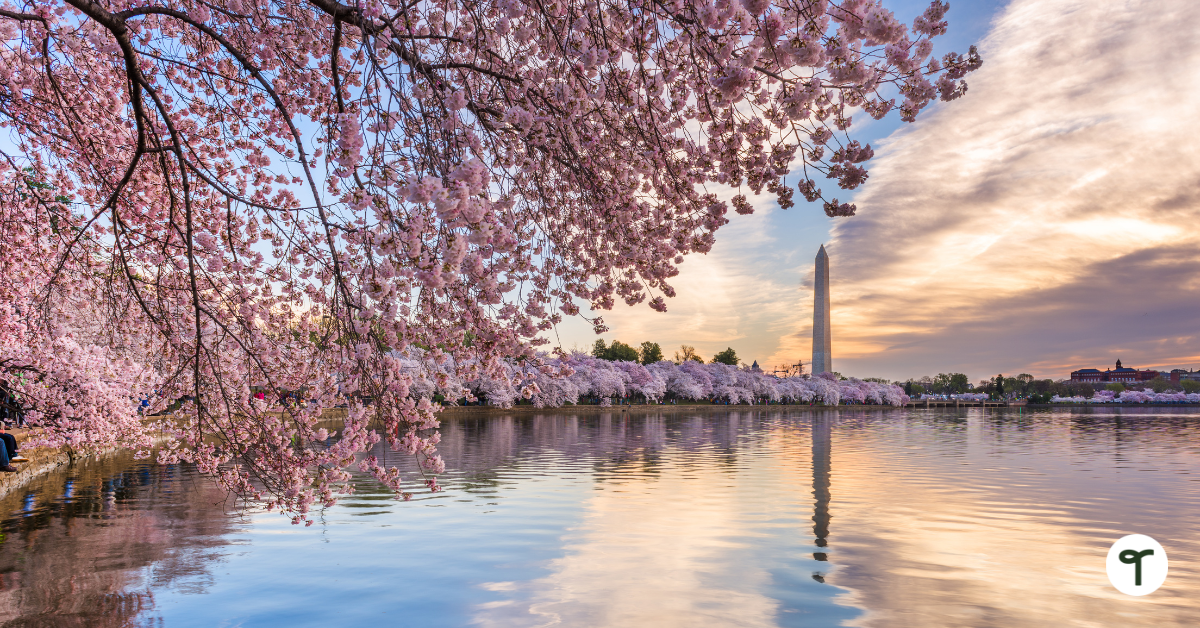
44. The bark of trees that grow in sunny places is thicker than the bark of trees that grow in shade.
45. About 900 species of eucalyptus trees grow in Australia. The trees are the koalas’ main source of food.
46. Apple trees need four to five years to produce their first fruit.
47. The world’s rarest tree is the Pennantia baylisiana, or the Three Kings kaikōmako, which lives in New Zealand. There is only one left in the wild.
48. Pine tree leaves are needle-shaped, which helps snow slide off them during the winters. Heavy amounts of snow would otherwise break their branches.
49. Maple trees come in about 128 species and have varying lifespans. Sugar maples, for example, can live up to 400 years, while silver maples have a typical lifespan of 35-65 years.
50. In 2004, oak trees were declared America’s national tree. They symbolize strength and sturdiness.
Tree Jokes for Kids
Use some wordplay in your classroom activities or see how many giggles come from telling these tree jokes to your class:
What’s a tree’s least favorite month?
Sep-timber
Why was the weeping willow sad?
It watched a sappy movie.
Why was the tree stumped?
It couldn’t find the root of the problem.
What is a tree’s favorite shape?
A tree-angle

What did the Jedi say to the tree?
May the forest be with you.
What kind of stories to giant sequoia trees tell?
Tall tales
What’s a tree’s favorite drink?
Root beer
What gets a year older every time it rings?
A tree!

What sound does a tree make?
It barks
Why are Christmas trees bad at sewing?
They keep dropping their needles.
Why do trees hate riddles?
Because they’re easily stumped.
How can you identify a dogwood tree?
By its bark

How to Use These Facts in the Classroom
Here are just a few fun ways you can use some of the facts above to continue branching into the world of trees:
- Exploring plant classification? We know trees are classified based on their physical characteristics, such as their leaves and bark, and facts 39, 44 and 48 are all perfect for introducing the differences between those characteristics.
- Use fact 25 to introduce the concept of the ecosystem and the role trees play in it!
- Work on understanding and comparing large numbers in math with facts 11 and 12. Why not ask students to calculate how many acorns an oak tree would drop in 10 years or how much water a sequoia tree would drink in a week?
- Use fact 10 while teaching about space exploration in your science class. Introduce your class to the significant figures who made space travel possible and the impact that has had on our modern lives. Have students create a timeline of significant events in space exploration, highlighting the impact on scientific research and the development of new technologies.
- Bring trees into your poetry discussions with your sixth graders by reading Mary Oliver’s “When I am Among the Trees.” Have your students work in pairs or small groups to analyze the poem and identify literary devices and their meanings. Then share fact 38 about the sandbox tree or fact 43 about the cherry trees, and direct students to write their own poems about these trees, using the devices they’ve identified.

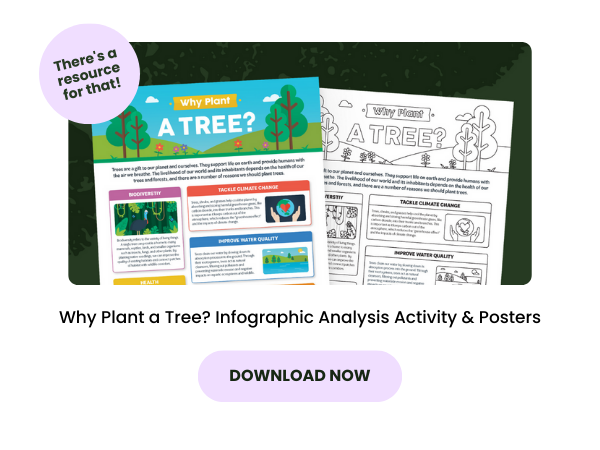
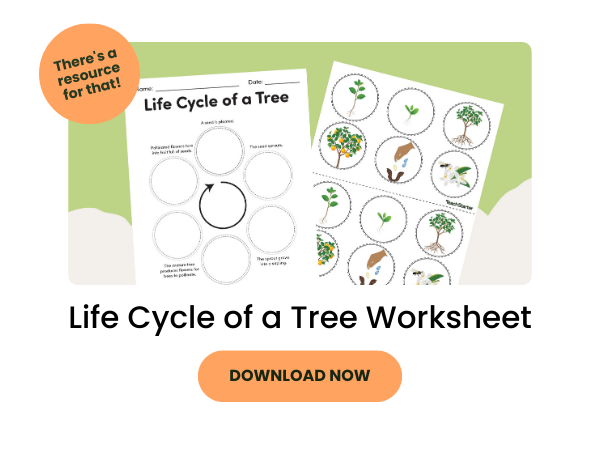







Comments